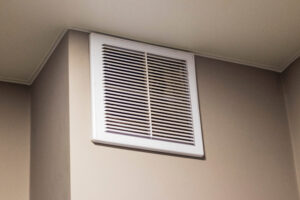A dryer won’t operate to its maximum efficiency if its vents are filled with lint, dust, and dirt. It can lead to potential fire hazards and high energy bills that are not only costly but also waste your time and energy. If you find your dryer takes a longer time to dry clothes or needs two or three cycles to complete one load then it is important to check your ductwork for clogs. In this article, we will be sharing with you 7 simple steps on how to clean out a dryer vent.
- Locate the vent system
Before you clean your dryer’s ventilation system, it is important to know where the vent starts from and where it ends. Most dryer units tend to have a 4-inch diameter exhaust at the back that connects to a dedicated ductwork made of a metallic pipe or an aluminum elbow. It is the pathway to which hot air travels from your device to the outside walls of your house. Follow the ductwork from where it connects to your dryer to where it ends.
- Safely disconnect your dryer

To insure your dryer works well, get the dryer vents cleaned
Before you do or touch anything, make sure to unplug the power cord of your electric dryer from the wall outlet. Next, remove any clamps or metal tape that attaches the dryer vent pipe to its exhaust. If you are operating an electric dryer, you should be able to push the appliance out of the way and remove the vent pipe from the wall duct. You need to be more careful with dryers that run on natural gas if there is a need to reposition the unit.
- Connect your dryer vent cleaning tool
You can extend your reach inside the ductwork with a dryer duct cleaning kit connected to a power drill. Standard kits do come with flexible rods that extend up to 12 feet inside the duct. You can attach the rods and tape them for added insurance, with the rotating brush attached first. Connect the power drill at the end, insert it in the duct pipe, and turn it on for the brush to work its magic. The drill should spin on medium power while you push and pull slowly to clean the interiors.
- Vacuum the interiors of the ductwork
Connect a suitable hose attachment to your vacuum cleaner, turn it on, and suction the entrance of the vent. Vacuum out what you can by poking it inside the dryer exhaust duct. Before heading to the exterior vent, make sure you clean up all the mess that your cleaning brush left behind. You may need to use soapy water to clean up if the lint leaves behind some residue.
- Check the duct pipe for any damage
It is important to inspect the aluminum pipe or ductwork for any tears, dents, holes, or kinks after vacuuming. In case you find any damages, you may have to replace the vent because lint can build up in the troublesome areas, causing a fire hazard. Failure to solve this issue could also cause other problems with venting in the future.
- Tidy up and reconnect everything
If you haven’t cleaned your dryer vent in a while, you should expect a lot of lint flooding out of the wall. A simple broom and dustpan can help if the lint is too much for your vacuum to handle. Before reconnecting your dryer, make sure to clean up everything and ensure the space is tidy. Consider replacing your soft foil-style vent with a pair of 90-degree aluminum elbows. They are hard but adjustable and last for a very long time.
- Ensure everything is firmly attached and test the dryer
Once you have reconnected your dryer, replace the outside cover at the end of the ductwork and screw it in place. Confirm that everything is attached before plugging back and testing your dryer. It is important to repeat this process as necessary as possible to ensure your device is working properly. You should notice a change in terms of performance and efficiency after cleaning your dryer vents.
Dryer vent cleaning is an essential part of maintenance that extends the lifespan of your dryer. It reduces the potential for fire hazards caused by lint or clogged ductwork. If you find it difficult to clean the dryer vent by yourself, consider seeking the help of a professional. An expert can always perform other checks besides cleaning to ensure your dryer operates at its optimal efficiency.




